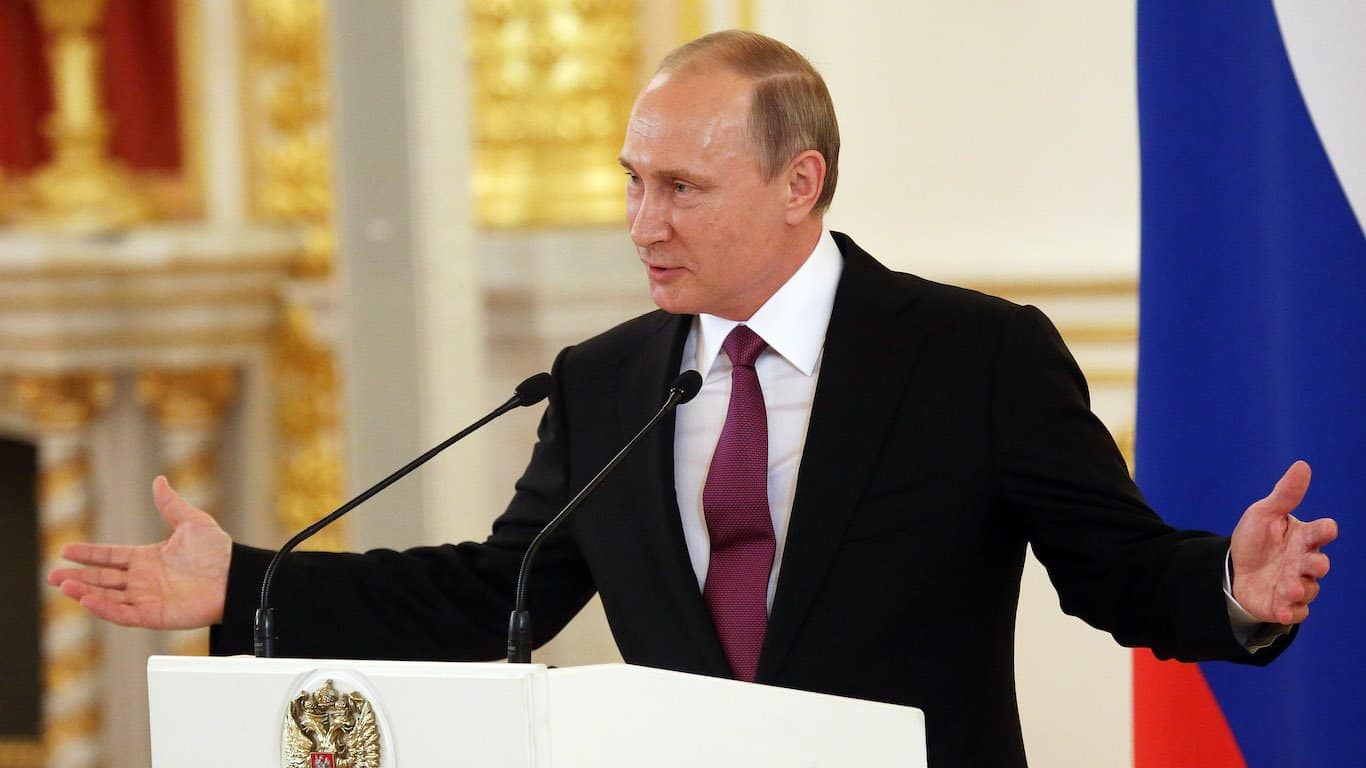Not all world leaders will face an assassination attempt. The vast majority will never encounter someone who genuinely has the tools, time, and energy to take their life. However, some world leaders faced and survived multiple assassination attempts. Throughout history, powerful leaders have encountered opposition from within and outside of their countries, resulting in people attempting to take their lives to end their reign.
Only 0.002682% of the U.S. population experienced an aggravated assault in 2022, according to the FBI. To have multiple people attempt to take your life in a short span is unthinkable to the average person. Let’s examine world leaders who not only had multiple attempts on their lives but who had the most attempts on their lives in history.
Part of the difficulty of creating this list comes from the fact that not every assassination attempt on a leader is put down on paper. There is danger in openly recording assassination attempts as the documentation can put the leader’s life in jeopardy by exposing flaws in security details. Thus, we typically only know about assassination attempts once a leader has passed or is no longer in power.
However, some sources give us a peek into more modern and historical leaders. We consulted published lists to determine which leaders had the most assassination attempts, whether they were currently dead or alive. We organized the list into a descending list of assassination attempts by number. Then, we researched those assassination attempts in-depth, using first-party sources wherever possible.
10. Vladimir Putin

It’s no secret that Vladimir Putin has a lot of enemies, both within and outside of Russia. It doesn’t matter if you look domestically or internationally, it’s not hard to find opposition to Putin’s policies. No published documentation shows the exact number of assassination attempts the Russian president has faced. However, we know it’s more than a handful. Three major assassination attempts were reported widely enough for the general public to know about them.
First was the 2002 potential attempt that was reported to have been planned for Putin’s visit to Azerbaijan. The assassination attempt was reported around 10 days before Putin was planned to arrive in the country. The authorities noticed an especially large shipment of explosives entering the country.
They traced it back to Kyanan Rostam, who is believed to have been planning to carry out the assassination. Then came the 2012 assassination attempt just before the Russian presidential elections. Officials in Russia and Ukraine report arresting two men who planned to assassinate then-Prime Minister Putin. In 2016, a serious attempt on Putin’s life came when a Mercedes veered across lanes and collided with the car Putin was meant to be riding in on the way to the airport. However, he had changed cars at the last minute. The collision killed his favorite driver, but the Russian President was unharmed.
Sources report that there were six major assassination attempts against Putin that we know of. However, the Kremlin is typically pretty tight-lipped about the affairs of the Russian President. There may have been other serious attempts that we don’t know about. Most countries don’t like to appear weak. Thus, they’re less likely to report an assassination attempt, especially if it was nearly successful.
9. Muammar al-Qaddafi

Muammar Qaddafi, the Libyan chief of state, gives his first speech as Chairperson of the African Union in the Plenary Hall of the United Nations building in Addis Ababa, Ethiopia, during the 12th African Union Summit Feb. 2, 2009. The assembly elected Qaddafi to replace Kikwete as chair of the organization. (U.S. Navy photo by Mass Communication Specialist 2nd Class Jesse B. Awalt/Released)
Known for his erratic behavior and impassioned speeches, Muammar al-Qaddafi served as the autocratic leader of Libya following his coup against King Idris I of Libya. Qaddafi was a talented student who graduated from the Libyan military academy in 1965. From there he continued to be promoted through the military and he began plotting a coup against the king with his fellow military officers.
During his 41-year rule over Libya, Qaddafi made many enemies both domestically and internationally. Most notably, he came to blows with the United States government when he began to challenge the U.S. “Petrodollar”, which stipulates that countries must accept payments for oil and natural gas in U.S. dollars. These contracts artificially inflate the value of the U.S. dollar.
They force foreign nations to have huge reserves of U.S. currency to purchase oil from oil-rich nations. Qaddafi planned to challenge the Petrodollar and only accept payments for Libya’s natural resources in Dinar. Rejecting a petrodollar contract would make the U.S. dollar weaker on an international level. Further, it would empower other oil-rich nations to challenge the petrodollar.
In 1986, the U.S. military bombed Qaddafi’s compound in an unsuccessful attempt to kill him. Then, in 1993, 2000 Libyan soldiers from the Wafalla tribe plotted to kill Qaddafi. They felt that their tribe lacked representation in the government and military. There were so many assassination attempts between 1987 and 1998 Qaddafi created a whole special force to sniff out insurgents.
8. Queen Victoria
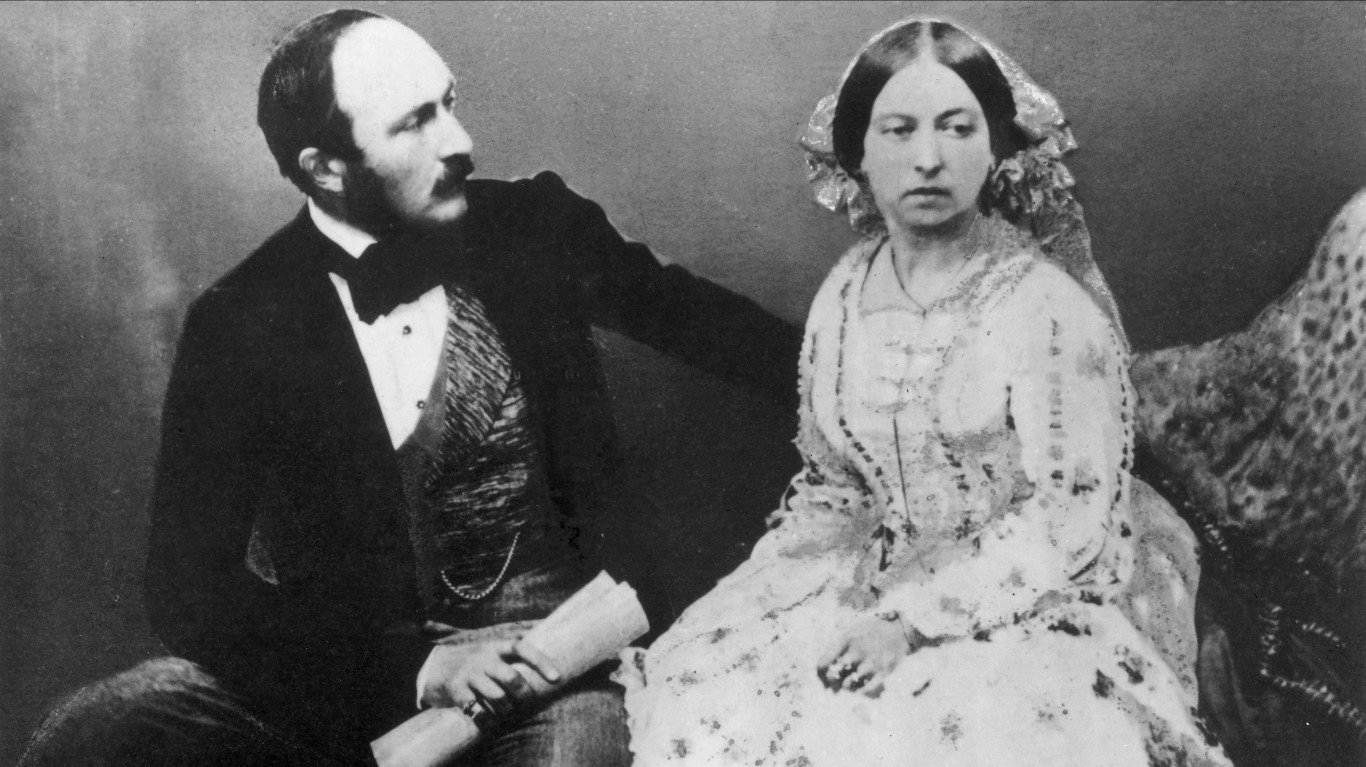
Queen Victoria was one of the most successful queens of the British Empire. She reigned as queen for 63 years and she survived around eight assassination attempts during that time. She took each attempt as best she could, and used her power to change English law to better protect herself and others from people who wished to do them harm. Some of her assassination attempts were simply because she was a woman in power.
Thus, people did not respect her authority as queen. If we think misogyny is a problem today, it was even more problematic during Victoria’s reign, before many of the protective laws that help keep modern women safe were in place. If Victoria had not been a royal, attempts at her life would likely have been seen as not that big of a deal.
The first attempt at taking Queen Victoria’s life came shortly after she took the throne. A man rushed her carriage with a gun, claiming he was the rightful king of England. The attempt was unsuccessful and he was sent to an asylum.
Shortly after the first attempt, a waiter decided he refused to live in an England that was ruled by a woman (remember that misogyny we were talking about?). He opened fire on the then-pregnant Queen Victoria and Prince Albert. After capture, he was also sent to an asylum to live out the rest of his life. In 1842, a man fired on Queen Victoria as she returned from church. He was unable to kill her but escaped capture only to return and fire on her again. Victoria insisted she be used as bait to lure out the assassin. He was subsequently arrested and sentenced to death.
7. Yasser Arafat

While the Israeli propagandists will have you believe that Yasser Arafat was nothing more than a terrorist, he was a decorated hero to the Palestinian people. Arafat was the chairman of the Palestinian Liberation Organization and President of the Palestinian National Authority. Many people believe that Arafat’s death was the work of the Israeli government.
A lot of the Palestinian people believe that the Israeli Institute for Intelligence and Special Operations is behind most of the assassination attempts against Arafat. Arafat himself accused Ariel Sharon, an Israeli general and former Prime Minister, of at least 13 attempts on his life. Sharon has never given an exact number of assassination attempts he orchestrated. However, he has been clear that the Israeli government had ambitions of a successful hit on Arafat.
In 2004, Arafat, then aged 75 years old, suddenly became very ill and died in a French hospital. Investigation of his personal belongings showed that they had a high concentration of radioactive materials. Further investigation found moderate evidence that his death had been a poisoning rather than natural causes. Thus, most Palestinians believe that he was murdered by the Israeli government.
The international community can’t come to a consensus on whether Arafat’s death was intentional or accidental. However, most empirical evidence does seem to suggest that there was some level of foul play involved in his passing. The presence of high radioactivity in his belongings is definitely suspect and the evidence of poisoning is not insignificant. Additionally, Israeli officials were fairly open about their intention to put him in the ground. Finally, Israeli officials have a documented history of being involved in the deaths of high-profile Palestinians.
6. Hussein bin Talal
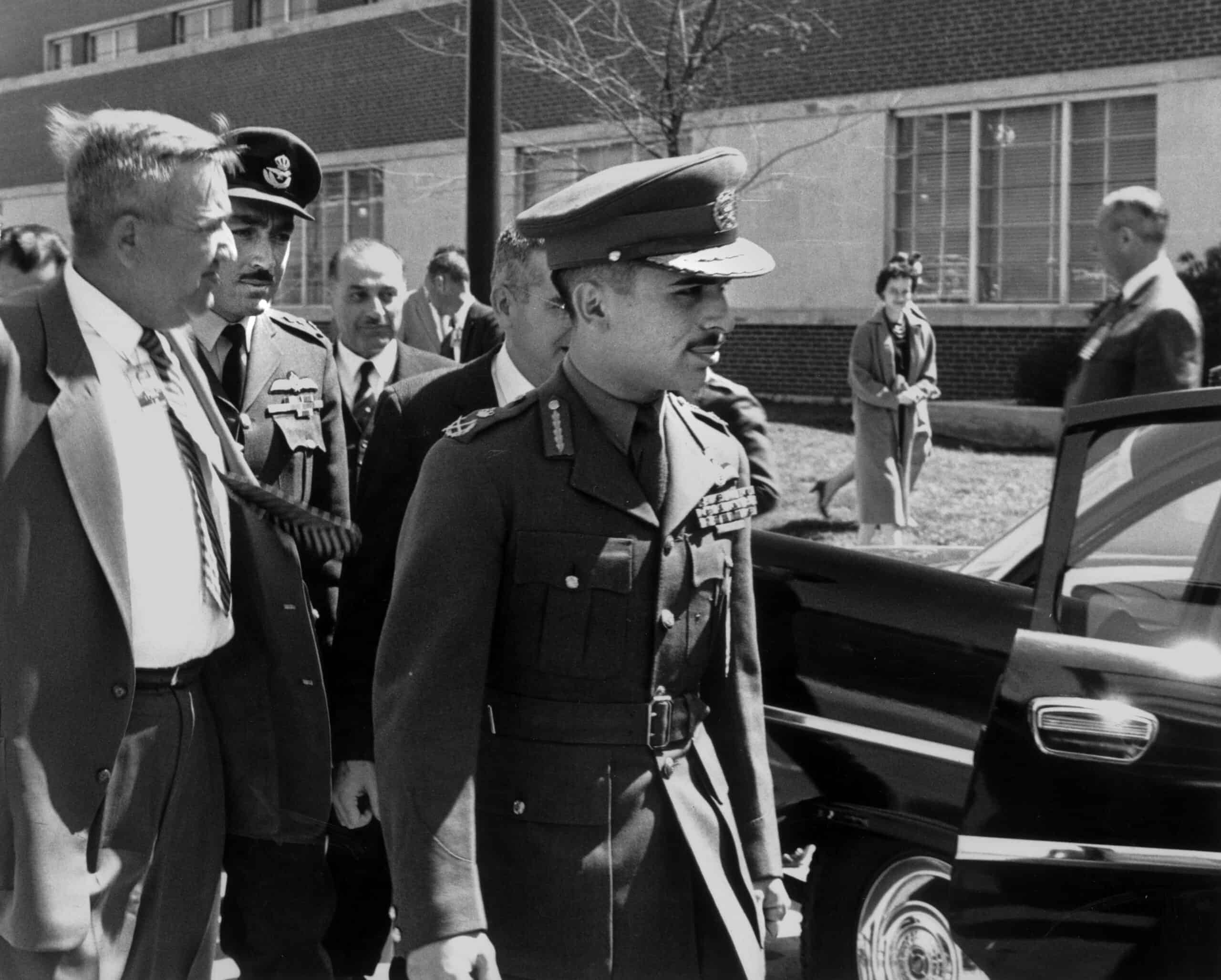
From the mid-1900s until the late 1900s, Hussein bin Talal served as Jordan’s king. During his time as king, Hussein survived several assassination attempts from various sources, including domestic and foreign threats. The first assassination attempt he would encounter occurred when he was just 15.
He was walking with his grandfather when a man opened fire on them. His grandfather was murdered in this attempt but Hussein was unharmed. He followed the gunman, causing the gunman to fire at him directly. A medal he was wearing—a gift from his grandfather—deflected the bullet, saving his life. This attempt would be the first of many that he endured throughout his lifetime as king of Jordan.
Hussein would be plagued with assassination attempts from within his own country and outside of it, leaving him with fewer loyal cabinet members and troops than the average royal. In 1957, a royal advisor attempted a coup with financial backing from Egypt.
In 1958, two Syrian Mig-17s boarded his plane and attempted to force him to land at Damascus. Someone attempted to put poison in his food. The poison was found out when the food was fed to the palace cats. Another attempt came when someone put poison in his nose drops. There was also a bomb planted in his office, which ultimately killed the Jordanian prime minister instead.
5. Alexander II of Russia
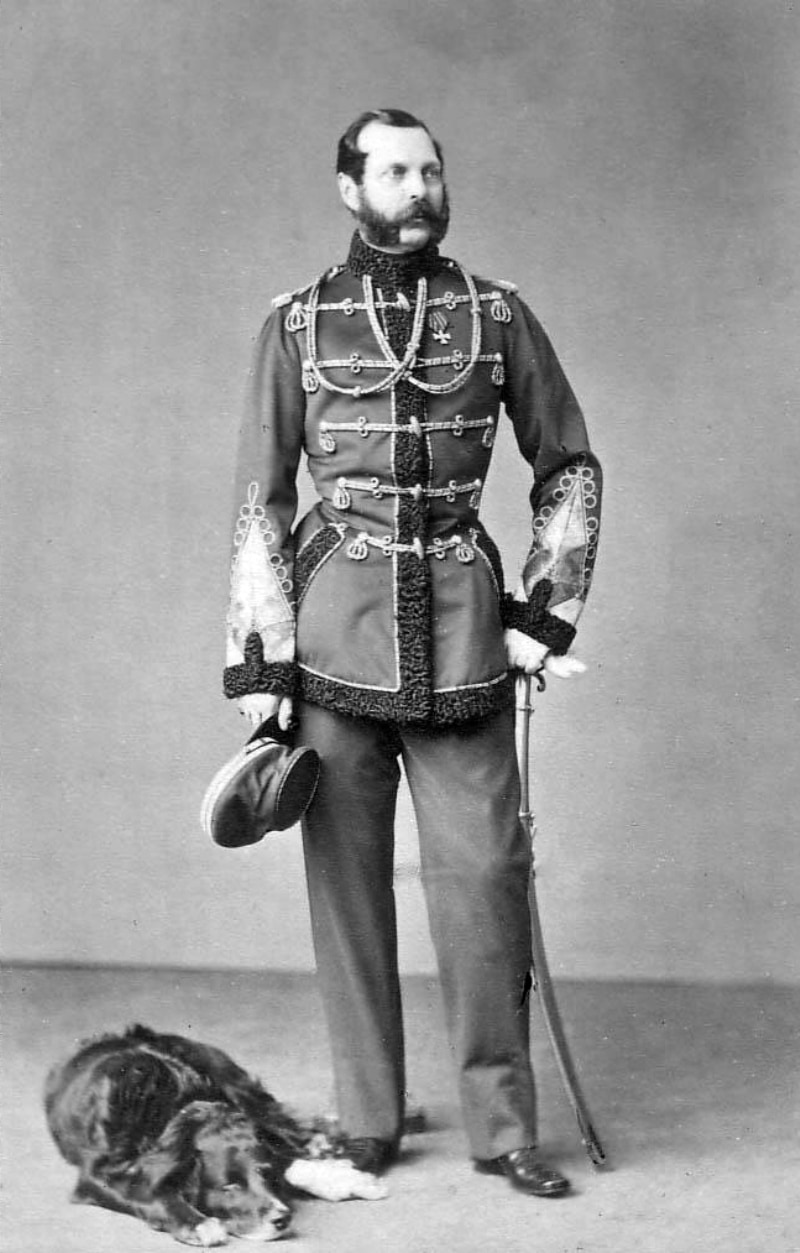
Czar Alexander II of Russia is a unique entry on this list because, while he survived several assassination attempts, he was eventually assassinated! Alexander was the pioneer of many reforms in Russia, including freeing the serfs, promoting university-level education, and abolishing corporal punishment. However, he also ended some of the privileges enjoyed by the nobility, which made him less popular with the nobles of Russia.
In April 1866, a member of the Russian nobility attempted to shoot Alexander as he left his summer garden. A peasant who witnessed the attack rushed the shooter and threw off his aim, saving the Czar. The following year a Polish citizen who had participated in the Polish Uprising attempted to shoot Alexander. However, the gun malfunctioned and the shot went wide as well as injuring the shooter’s hand.
In 1881, the People’s Will, a terrorist organization attempting to overthrow the Czarist autocracy, finally succeeded in assassinating Czar Alexander II. A bomb thrown by a People’s Will rebel detonated, killing the Czar in the streets of St. Petersburg, Russia on March 13th, 1881. While Alexander II did a lot to liberalize and modernize Russia, he faced great opposition due to his heavy hand with political reform.
On the day of his assassination, he signed the Loris-Melikov constitution into law, creating two political branches made up of indirectly elected representatives. His son, Alexander III, succeeded him and rejected the Loris-Melikov constitution. However, he did a lot to suppress the People’s Will until Vladimir Lenin’s Bolshevik revolutionaries realized the peasant revolution that the People’s Will advocated for.
4. Adolf Hitler
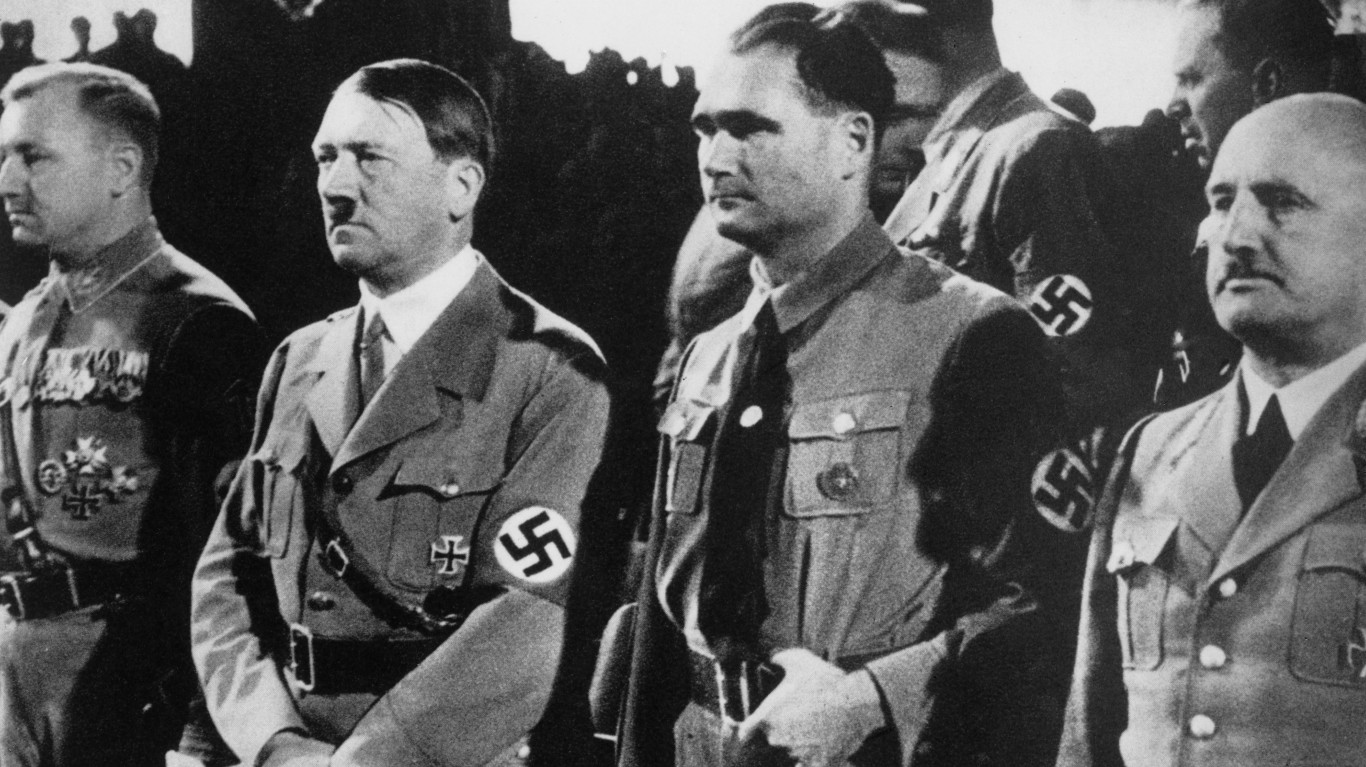
You might be surprised to know that, while unsuccessful, there were dozens of assassination attempts against Adolf Hitler. Some of those attempts were even by foreign government authorities attempting to topple the Nazi regime by taking out its head of state. However, none of those assassination attempts came to fruition and Hitler continued his dictatorial reign over Germany.
We currently recognize around 23 attempts or series of attempts, if several occurred by the same group of people in a small period. Recognized assassination attempts started in 1932 and continued until July 20th, 1944. Following the failed attempt in July 1944, Hitler became increasingly reclusive and was rarely seen in public leading up to his eventual suicide.
The first assassination attempt against Hitler came before World War II was even a blip on the radar back in 1921. The young radical had made a speech at Munich’s Hofbräuhaus beer hall. He was accompanied by members of the newly formed Nazi party and was speaking to a group of democratic socialists, communists, and other political opponents. His explosive personality and impassioned rhetoric whipped the attendees into a frenzy and soon, a drunken brawl broke out in the hall.
Unknown assailants ended up drawing guns and firing several shots at the speaker’s podium where Hitler was speaking. However, the shots missed and Hitler continued to rant, unharmed, for 20 more minutes before the police arrived to get a handle on the violent crowd. There would be many more assassination attempts, all failing, until the end of World War II.
3. Charles de Gaulle
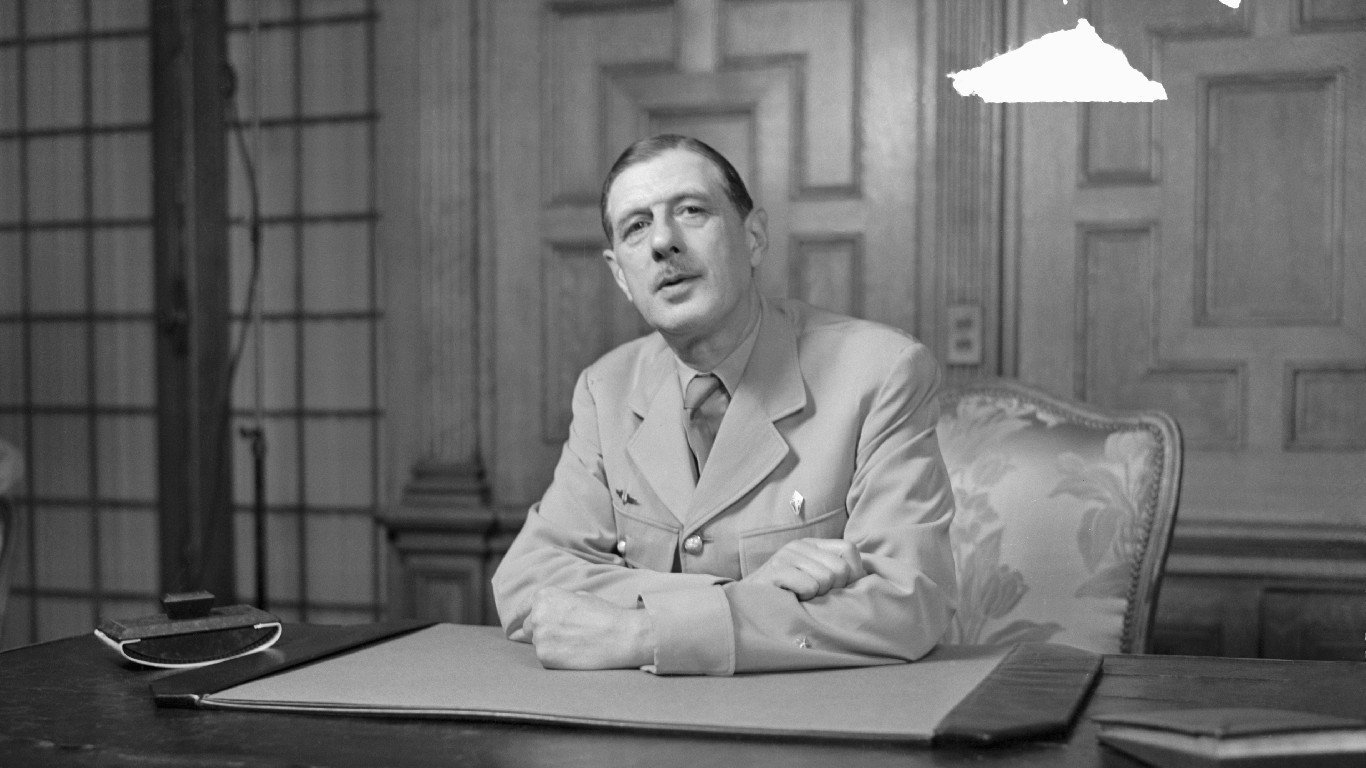
Charles de Gaulle served as a French general and president in the mid-1900s. From 1944 until 1966, he experienced 31 recorded assassination attempts. There was even a terrorist group formed with the sole purpose of bringing an end to his presidency. One would-be assassin even came as close as shooting a hole through his hat during the attempt. However, despite there being a huge number of attempts—several of which were quite close to killing him—he managed to survive all 31 recorded assassination attempts.
Attempts on de Gaulle’s life plagued the war hero’s presidency. Despite the severity of some of the attempts, he kept in good spirits, joking about how bad the people who were trying to kill him were at shooting. His candor, bravery, and ability to avoid death are still remembered by the French populous today.
The most serious of the 31 attempts occurred on August 22nd, 1962. De Gaulle and his wife were returning to their country home, halfway between Paris and Strasbourg in the eastern part of France. As they were riding through a Paris suburb on the way to the military airport, a hit squad armed with machine guns opened fire on their caravan.
De Gaulle and his wife ducked into their car as bullets flew overhead and managed to escape physical harm even though their car was hit multiple times and several bullets flew through the windows, narrowly missing their heads. Then 71-year-old de Gaulle joked about how terrible his would-be assassins were at shooting in a later interview.
2. Zog I of Albania
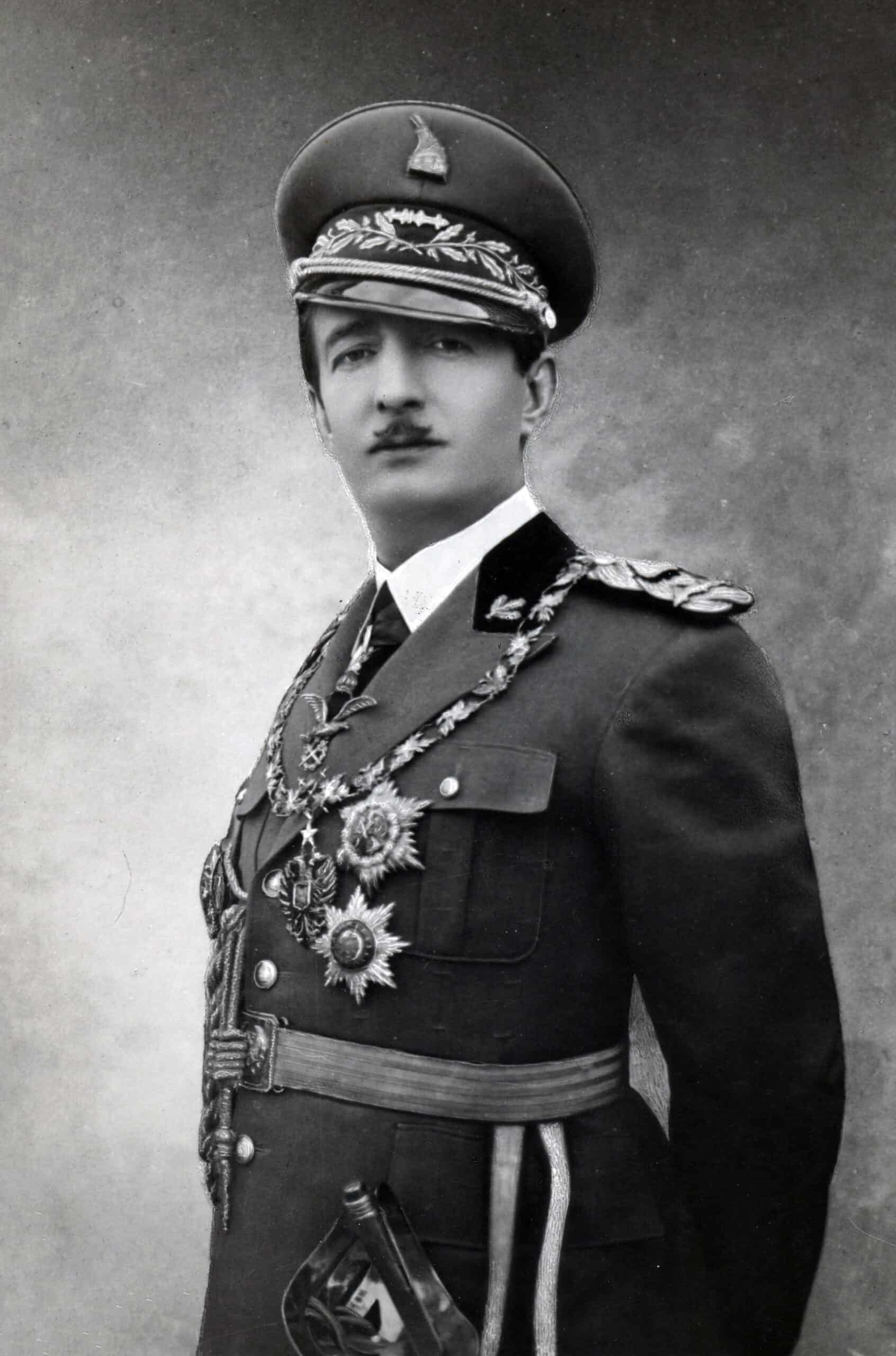
Another dictator with a lot of enemies, Zog I of Albania reportedly survived over 50 assassination attempts during his rule. Ahmed Bey Zog, originally born Ahmed Bey Zogolli, was the son of northern Albania’s most powerful Muslim chieftain, head of the Mati tribe.
He received three years of formal Ottoman education, first at Galata-Serail Lyceum and then at a military school in Bitola. Afterward, he moved to Constantinople before being called back to Albania to lead troops in a rebellion of the authority of the Young Turks. Then he fought against the Serbian army when they invaded Albania, one of the first distinguishing marks in his career. He was one of the eighty-something notable Albanians present when Albania declared its independence in the marketplace of Vlorë in November 1912.
After taking a position of power, Zog I created a huge number of enemies, in large part because of his dictatorial leadership and the fact that he designed the Albanian constitution to give him power over all of Albania’s affairs. It’s said that Zog I had over 600 blood feuds during his reign that led to numerous assassination attempts.
He became Prime Minister in 1922 and an assassination attempt in 1924 had him resign from premiership. However, he built a shadow government of his cronies and continued to rule from the background. Under his rule, Albania was declared a hereditary monarchy and Zog became Zog I, King of the Albanians. Many more attempts on his life would happen before his ultimate death in 1961.
1. Fidel Castro
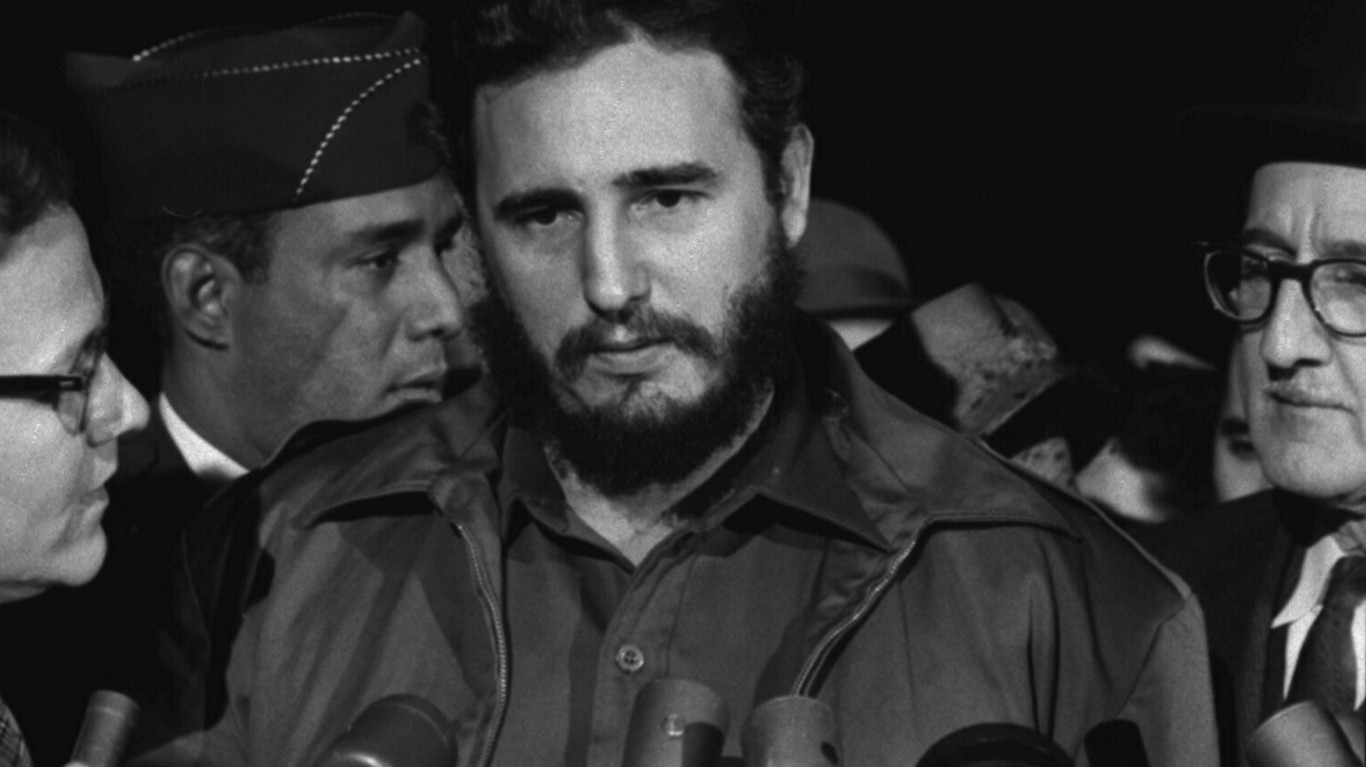
We don’t have a definitive number of assassination attempts on Fidel Castro. However, a top aide from Castro’s cabinet has estimated that the Cuban leader faced over 600 assassination attempts during his fifty years in power. Castro was a revolutionary who overthrew the military dictatorship installed in Cuba by Fulgencio Batista.
He came into power after overthrowing Batista in 1959 and stayed in power until he handed the reigns to his brother in 2008. He passed in 2016. A large reason why Castro experienced so many assassination attempts was that he was a target for the CIA, which is well-documented for assassinating world leaders the U.S. disagrees with. The former Cuban chief of intelligence, Fabian Escalante, estimated that the U.S. tried to kill Fidel Castro 634 times over 40 years, with some presidents trying to end his life over a hundred times during their presidencies.
Escalante was even able to give a numerical estimate of how many times the CIA tried to kill Castro per president. He estimates that Eisenhower attempted 38 assassinations on Castro, 42 for Kennedy, 72 for Johnson, 184 for Nixon, 64 for Carter, 197 for Reagan, 16 for Bush Sr., and 21 attempts under Clinton. There were also numerous plots that the CIA floated but never executed against Castro. However, despite the massive effort to bring Castro down, none of the 634 attempts recorded by Escalante were successful and Castro died of natural causes at the age of 90 in 2016. Castro has, by far, the most assassination attempts against him on this list.
